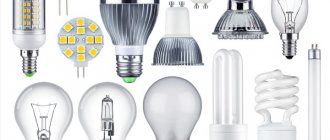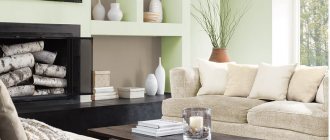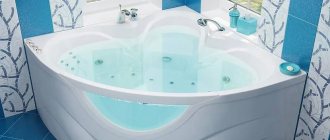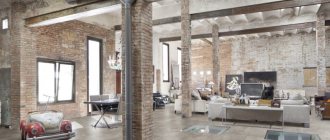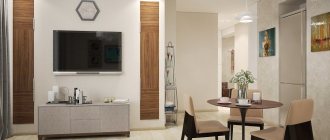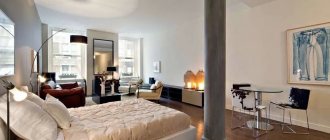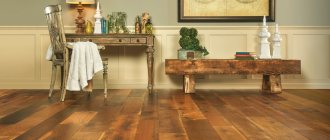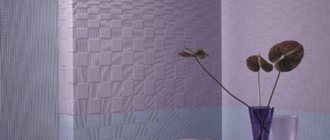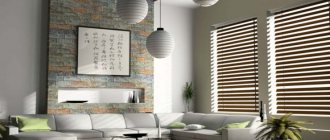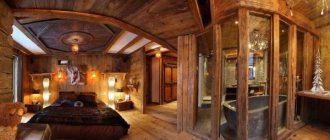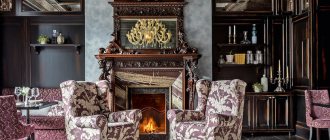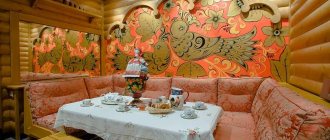Many of us, when we hear the word “glass blocks,” recall Soviet buildings with bluish-green glass squares that served as windows or partitions in various public buildings - from canteens to bathhouses. In those days, it never occurred to anyone to use this building material as decoration. The use of glass blocks was due to the durability, affordability and obvious functionality of the products. Nowadays, this building and finishing material has undergone external changes and is used not only for its main purpose, but also to decorate the interior and facades of buildings. Over the past ten years, the use of glass blocks in the design of residential premises has been gaining popularity - modern designers offer options for constructing practical and aesthetic structures, using glass blocks locally, as a functional decor.
Glass blocks are an excellent soundproofing material, resistant to moisture and have good heat-saving properties. That is why it was so often used in utilitarian rooms for water procedures. And these days, glass blocks can most often be found in bathroom design projects, where partitions are created from translucent cubes, window openings are laid out and counters are installed.
The design of a glass block is simple - it is a hollow “brick” inside, the walls of which are 6-8 mm thick. The rarefied air inside the unit provides the product with high sound insulation properties and low thermal conductivity, which helps conserve room heat. As a result, industrial glass blocks are used both for the construction of non-load-bearing walls inside a building and for cladding the external surfaces of buildings.
As a rule, glass blocks are produced in a square shape, but there are also products in the form of “bricks”, end (corner) blocks and even round shapes. As for colors, transparent, colorless glass blocks have the advantage, but recently tinted products with various decorations inside (pebbles, shells and even herbariums) are gaining popularity; LED products look especially luxurious and modern. Glass blocks can be of different sizes, but the most popular option is the standard shape: 19x19x8 cm and 24x24x8 cm.
What is glass block?
A traditional glass block was a hollow cube with walls made of glass about one centimeter thick, which, due to the internal air cushion, reduced sound transmission by 60–70%, light transmission was 80%, and dense glass blurred the outlines of people behind it and prevented anyone from watching. which was not intended for prying eyes.
In addition, they were very durable, so glass walls made of cubes did not frighten either mothers in kindergartens or residents of Brezhnevkas, whose entrances were regularly decorated with blue-green glass delights.
But as the wise Ovid said: “Tempora mutantur, et nos mutamur in illis” (translation: Times change, and we change with them), so the glass blocks have changed, acquiring new forms - for example, bricks; new content - they are filled with installations, herbariums or mother of pearl; a new type is decoration with ornaments or graphics, as well as painting glass in different colors.
The sizes of glass blocks in apartment interiors vary greatly, but the most popular are standard cubes 24x24x8 and 19x19x8.
Shape and size
The most popular shapes of glass blocks are square and rectangle. They can have the following sizes:
- squares: 19x19x5 cm, 19x19x7 cm, 19x19x8 cm, 20x20x2.2 cm, 24x24x8 cm, 30x30x10 cm;
- rectangles: 190x90x80 cm, 240x11.5x8 cm;
- small (mini) glass blocks: 11.5x11.5x8 cm, 14.6x14.6x5.5 cm, 14.6x14.6x8 cm, 14.6x6x8 cm.
To create a pattern or clear corners on the shower wall, you can use triangular blocks that have dimensions of 17.2 x 23.6 x 8 cm (legs, hypotenuse and thickness).
To form edges and wall transitions, curved, half-shape and rounded models are available. The dimensions of the corner glass block are 19x19x8 cm (for the top joint of the two sides) and 19x15x8 (for the side joint). The standard halves have dimensions of 19x9.4x8 cm, and the end halves have dimensions of 19x9x9 cm.
To decorate the edge of the partition, end blocks are used, having 1 connecting and 1 transparent side wall. They are available in standard sizes - 19x19x8 cm and 24x24x8 cm. The convex end blocks have parameters of 19x14.4x11 cm and 19x13x8 cm.
The thickness of the seam between the elements should be from 2 to 5 mm. The recommended opening size is indicated by the manufacturer.
Types and features of material
So, what kind of finishing material is this and what do glass blocks generally look like in the interior? To put it simply, it is a kind of hollow inside “sandwich” made of two thick centimeter glasses combined with each other. In the Soviet Union they were produced according to standards that have smoothly migrated to the present day.
There are only two size ranges: 19x19x8 and the second - larger - 24x24x8.
The indicators remained the same:
- “filling” of air makes it possible to get rid of external noise in the room by almost 70%;
- they perfectly transmit light, leaving what is happening inside the house closed from prying eyes;
- In terms of strength, this tile can be compared to a brick; it conducts heat better than its counterpart, but one piece weighs significantly more than a brick - up to four kilograms.
What has undergone significant changes today is the appearance of tiles. Only the lazy cannot find a design and shape to suit their taste on the market today: with a pattern and in plain colors, with and without backlighting, in the form of stained glass or installations, decorated with flowers, corals and whatever your heart desires. Choose and conquer.
The form has also undergone significant changes. Today you can find not only classic rectangles and squares, but also triangular and even round options.
To assemble the shower cabin you will need the following tools
The shower cabin is not included in the package!
- Sealant (with application gun)
- Screwdriver
- Drill Ø1-3mm
- Phillips screwdriver
- Pencil
- Pliers or wrenches
- Level
According to the manufacturer, some shower cabins are assembled without sealant. But even for these types of showers, you will still need a sealant. They need to process the shower drain hole, install water traps and magnetic seals, and other small options if available, such as processing the hole for the radio and nozzles.
In all other shower stalls, sealant is required.
With its help, all fixed elements are processed. The joints of the rear wall between the central panel and the pan, the joints of the front frame and the pan, fastening the drain and nozzles, installing seals and water shut-offs.
Glass shower cabins are supplied unassembled, in cardboard boxes. The number of boxes per shower cabin is from 3 to 5 (depending on the manufacturer)
Advantages and disadvantages of finishing material
pros
Taking into account its characteristics, glass can be harmoniously integrated into almost any room.
- Durability - a wall made of glass blocks will look good in the interior and is guaranteed to serve you for many years.
- Moisture resistance is why glass blocks are very popular in bathrooms.
- Easy to clean. A special glass cleaner, a rag and five minutes of time is all you need.
- Noise insulation. The sound of water, screams on the street or loud music - you can forget about these irritating factors.
- Thermal conductivity. Glass blocks also work well with the air temperature in the room: by maintaining the required level of heat, they make your home even more comfortable.
- Light transmission. The thickness of one layer of glass is more than a centimeter, but this does not prevent almost all sunlight from outside from entering the house - up to 90%.
Minuses
Almost an ideal finishing option, isn't it? But what's the catch? It is usually clarified at the installation stage.
The thing is that to build a structure, you simply need professional skills. And if you don’t have them, be prepared to spend money on a specialist, otherwise you risk failing the entire aesthetic component of the issue.
- Weight. As already mentioned, it is about 4 kilograms per square. This not only complicates the construction process, but also is a significant burden in the overall engineering plan of the premises. To put it simply, if you don’t want to fall into the hands of your neighbors below, you shouldn’t decorate a surface larger than 15 square meters in this way.
- If you are a fan of decorating your walls with paintings or photos, this item is for you. The fact is that you cannot screw screws or drive nails into a glass wall. Hanging a shelf, decorating with a picture or attaching hooks - all this is not about glass blocks.
- The material must not be cut. This means that you will have to fully accept the conditions dictated by the size of the source.
- It is impossible to install wiring in such a wall.
- The design does not allow air to circulate. That is why you should not decorate window openings with them - the apartment will not breathe.
In the living room
Glass blocks in the living room interior can be used to create full-fledged partitions.
The use of glass elements in wall decor looks very interesting, stylish and unusual.
The material is used to construct the base of a small coffee table or a full-fledged dining table.
By decorating the walls with glass blocks, you can highlight the necessary area in the room.
In the bedroom
Glass blocks in the bedroom interior create a calming and relaxing atmosphere due to their ability to diffuse and refract light.
A glass block partition will help create a cozy atmosphere in the sleeping area.
Glass blocks can be used to decorate a doorway or part of a wall.
A wall made of blocks located opposite the window will create a festive atmosphere in the room, especially if you choose colored glass blocks, such as green ones, for decoration.
In the hall
In most cases, hallways have a small area; to visually enlarge the space, you can use light shades in the interior or decorate the corridor with glass blocks.
The door to the living room can be replaced with a beautiful arch made of glass blocks.
The floor and ceiling can also be finished with a strong material, such as blue. You can make a small table from glass blocks near the wall.
Adding glass blocks to your wall trim can help improve illumination in a poorly lit hallway.
In the kitchen
Glass blocks are used more often in creating kitchen interiors. Glass material is used not only for finishing walls, window and door openings, but also for finishing a kitchen apron, decorating and zoning a room.
Recently, glass blocks have been used to make table bases. This decor looks quite interesting and unusual.
Clear glass blocks pair well with white kitchen cabinetry or wood trim.
Features of interior glass blocks
The material is resistant to moisture, high or low temperatures, and easily transmits light, allowing you to save energy. It is not difficult to maintain glass blocks in their original form: they are easily cleaned of dirt with a damp cloth. Glass blocks in the bathroom interior allow you to increase the space of the room due to the ability of the material to transmit light.
Interior design with glass blocks Source remontbp.com
But there are negative sides to using them. You cannot attach a shelf or any decoration to a glass block wall or partition. They cannot be cut, it is impossible to lay electrical wiring between them.
Wall decoration with glass blocks Source peregorodkainfo.ru
Glass block partitions cannot serve as a load-bearing wall.
Glass blocks in the interior Source roomester.ru
If you cover a window with glass blocks, the ability to ventilate the room will disappear. Double-glazed windows made from glass blocks will help cope with this problem.
Glass block finishing Source dekormyhome.ru
Specifications
According to the technological features of the technical processing of glass, glass blocks can be matte, embossed, even and smooth, glossy, colored, colorless, decorated. These indicators influence the light-scattering effect and determine the light-directing component.
Colorless variations have a transparency rate of 70-90%, colored - 50-70%, matte - up to 50%.
The material can have a colorless transparent base or a decorative one. It all depends on the design idea and area of application. And you can choose any color scheme and artistic palette!
Glass LED blocks and illuminated “bricks” are in fashion. Illuminated decorative elements in the voids have a semblance of a 3D effect.
Which glass block manufacturers are best to choose?
The correct choice of glass blocks is an important point when assembling a decorative structure. The range of such elements is varied. You can purchase products from domestic, Czech, and Italian manufacturers. Each glass block option will have special characteristics:
- Domestic. Affordable price and high quality make such parts the most popular on the market.
- Italian. They stand out for their special difference in color tones from other manufacturers. All blocks have perfectly precise lines.
- Czech. They occupy a leading position in production. They are distinguished by a wide variety of designs and unique colors.
How to use glass blocks in home design
Walls and partitions are the most common type of application of the building and finishing material that has become universal. For this purpose, it is extremely durable, soundproof and moisture resistant.
Translucent architectural structures look the most successful and are practical in the interior of a dining room, bathroom, or toilet.
Partitions allow you to zone the studio space, while walls allow you to delimit semantic zones. For example, separate the bathtub from the toilet. Uniqueness and originality are achieved by using blocks of various colors and configurations in the design.
In the kitchen, glass blocks look attractive in the decoration of a bar or island area in the form of stylized partitions.
Shower cabins are often made using semicircular partitions. Glass blocks do not let drops of water through and do an excellent job of increasing illumination: the penetration of natural light and creating an intimate environment, closed from prying eyes. Installations inside blocks of decorative elements “under the aquatic environment”, additional lighting will make the structures “alive” and original.
Glass block windows are most often installed in technical rooms. These include, with a reservation, utilitarian rooms - a bathroom and a toilet. Instead of a “blank wall”, a translucent window made of blocks in a private house is not only a bold, but also a practical, original solution. No additional curtains or blinds are required here.
At the same time, the sizes and configurations of window openings can be of the most intricate shapes, different geometries and locations on the wall.
“Unexpected” solutions in the use of glass blocks in the interior:
- semicircular island counter with lighting, serving as a bar area and serving area for the dining room;
- fragmentary wall inserts made in a “chaotic” but thoughtful design manner;
- the floor and roof of a private house made of durable glass block will make an office, greenhouse, winter garden, attic unique;
- table made of glass blocks on a rigid frame for the strength of the entire structure.
Where are glass blocks used?
Glass blocks are distinguished by good sound-proofing and heat-saving properties, increased resistance to moisture and other external factors.
Application of material:
- For finishing walls or creating decorative inserts.
Decorative insert made of glass blocks Source homester.com.ua
- To create partitions and divide a room into functional zones.
- For finishing external walls of residential premises.
Glass blocks in a modern interior Source evrookna-mos.ru
- For zoning bathrooms, finishing shower walls.
The variety of surfaces, shapes and colors of glass blocks allows this material to be used for finishing rooms in various stylistic directions.
Most often, glass blocks are used to decorate the bathroom. The material is practical, resistant to high humidity, easy to care for, more reliable and durable compared to plasterboard.
Glass blocks in the bathroom Source pinterest.com
Walls made of glass blocks are suitable for decorating a shower stall.
In combined bathrooms, you can use material to divide a spacious room into functional zones. A straight or rounded wall made of multi-colored or single-color glass blocks can be used to decorate a shower stall or drain. You can also make a small partition between the toilet and the bathroom.
In a large room, you can separate the washing machine from the main area, creating a small room for washing and storing linen.
In the bathroom of a country house, you can cover the window with glass blocks with colored designs or stained glass; when exposed to sunlight, the window looks interesting and unusual.
Partitions and walls made of glass blocks are highly durable, but cannot replace load-bearing walls.
See also: Catalog of companies that specialize in interior redevelopment.
Rules for decorating a room with glass blocks
- This material is “contraindicated” to classic styles: classicism, renaissance, baroque, gothic, empire. It is not always appropriate for rural areas: Provence, country, when wood is used in construction and decoration.
- In the design and architectural community, it is generally accepted that the most harmonious ratio of glass blocks to other finishing components of a separate living space is 1 to 10. At the same time, the toilet and bathtub do not have such restrictive recommendations.
- Glass blocks should not be the basis of load-bearing structures. They carry out exclusively decorative and design functions.
- They also successfully cope with zoning of any space, especially studio variations.
- It is advisable to “balance” the use of transparent, colorless materials in the living room with bright notes of color in order to completely avoid the “office” impression.
- Glass combines harmoniously with metal, wood, parquet, laminate, carpets, fabric bases and wallpaper.
Limitless design possibilities
Most often you can find glass blocks in the bathroom or kitchen. In the interior of a children's room, bedroom or living room, they are used less often, more as a decoration than a functional element.
The main features of glass blocks that attract designers:
- Decorative glass blocks are capable of transmitting more than 80% of sunlight, while at the same time allowing you to create a barrier behind which you can comfortably retire. This is true for small rooms;
- Glass and plastic blocks are particularly resistant to moisture. These qualities will be useful in residential apartments and houses (bathroom, kitchen, dining room), as well as in public places (dining rooms, saunas, beauty salons, swimming pools);
- The structures are very durable and comfortable to use;
- Glass blocks in the interior of a bathroom or kitchen look organic and fit well with any design and other materials in the apartment;
- A shower cabin made of glass blocks, glass partitions, compositions in door or window openings are very durable, they are convenient and easy to care for;
- Excellent sound insulation (for example, glass blocks will muffle the sound of pouring water by 60-80%);
- Good thermal insulation properties.
Application options
Glass blocks are used to solve a variety of problems: from zoning to decorating space.
Partitions
The construction of walls can be useful in offices, for example, to highlight a sleeping area in an open space or to clearly separate the space for cooking and relaxation. Glass block partitions in the bathroom are often equipped with shower stalls.
The design of partitions made of glass blocks looks advantageous both alone and in combination with other materials - they are sewn into drywall, creating original light windows or rows.
When it is necessary to build a large wall, glass is combined with brick and concrete blocks, as it itself looks too cold, like ice chips.
Window
Glass blocks are used to decorate interior windows of residential premises or exterior windows in private homes, in bathrooms, to hide from the prying eyes of neighbors.
For example, by installing glass blocks instead of a transom between the bathroom and kitchen, you will get decorations and additional lighting at the same time. And by cutting an opening in the white wall between the living room and the bedroom without windows, you will make the relaxation area more comfortable due to the penetration of natural light.
Furniture
The material is so versatile that glass block furniture is often made inside kitchens! They serve as a stand under a table or bar counter. Add lighting to the glass and get a modern and original decoration for your kitchen space.
Apron
A glass apron over the tabletop is not only practical, but also aesthetically pleasing. The surface is easy to clean, is not afraid of water, grease, high temperatures, and transmits light: in general, in all respects, it is suitable as a substitute for tiles or leather.
Decorative inserts in the wall
Glass bricks are used in wall decoration when there is a need to use this unusual material to a limited extent. Squares, like pixels, can be assembled into any shape - from abstract to completely recognizable. If desired, you can build in a backlight that acts as a dim evening light or a night light.
Glass block walls
Today, many owners of small apartments prefer to remove walls and partitions that are not load-bearing, and create interior structures of a more modern and convenient format.
Walls made of glass blocks allow you to perfectly zone the space and effectively complement the modern design of any apartment.
Interior walls made of transparent blocks are an ideal solution for landscaping dark halls, corridors, lobbies, where a lot of sunlight will enter through a glass prism, but the effect of seclusion and separation of one room from another will remain.
The use of glass blocks in large quantities is associated with some aesthetic difficulties.
The design may seem too cold, “soulless”. “Ice cubes” in the interior of the apartment must be supplemented with other materials with a warmer, more comfortable texture.
Original solutions in a modern interior
Glass windows and partitions will no longer surprise anyone. But using this durable yet translucent building material as a base for a floor can bring originality to any interior. Here is just one way to decorate an office with a seating area. The glass roof and glass block floor made the room feel airy, light and airy.
A semi-circular bar counter made of translucent glass blocks? Easy! The design will look especially impressive if you add colored or monochrome lighting to the design.
Small glass block inserts in the walls are a unique opportunity to add originality to the interior of the room. The room is filled with light, reflections play on the surfaces, but the walls do not lose strength and wear resistance.
Creating an internal partition from transparent glass blocks in the staircase space will help create a light, almost weightless image of this structure. The durable design will protect your staircase from direct sunlight from neighboring rooms.
Unusual use of glass blocks is also found in the sleeping area. Windows made from this material can protect your space from prying eyes, but at the same time fill the room with soft sunlight.
Partitions made of glass blocks
In modern interior design of apartments and houses, it is customary to form partitions of non-standard shape:
- Pyramid;
- Trapezoid;
- Ziggurat;
- steps;
- Arch;
- Oval;
- Round designs with holes.
A shower cabin made of glass blocks or a partition in the bathroom made of such decorative elements perfectly follows the rhythm of the tiles on the walls and emphasizes the cold aesthetics. Glass is not afraid of moisture, temperature changes, and diffuses light well.
You can “insulate” the sterility of glass partitions using decorative installations inside the blocks.
In a modern bathroom design, you can use shells and other “water” motifs. For the kitchen, gastronomic ornaments and compositions are more relevant. For example, fill the voids of transparent glass blocks with coffee beans or dummies of fruit.
External surface
Modern glass blocks can have a flat and smooth surface, this will increase the light flux passing through it. On sunny days, your room will be illuminated by pleasant sunshine.
There are also options with decorative motifs or matte surfaces. Thanks to this, you can create an interesting interior from glass blocks in an apartment or private house.
Main types of surfaces:
- Smooth transparent;
- Mirror shine;
- Opaque;
- Simulated.
Formation of window openings
Often, interior windows in apartments and houses are formed using spectacular glass blocks. They give lightness and airiness to the walls and allow better dispersion of the sun's rays.
Particularly noteworthy are the illuminated designs, which look great in the design of living rooms, bedrooms and hallways.
Creation of furniture items
Glass blocks, due to their strength and at the same time small thickness, are an excellent material for creating stationary furniture. Original dining and coffee tables, various designs of bedside tables and bar counters, separating, for example, the kitchen area from the living area in a studio apartment.
Such furniture looks even more impressive in combination with various lighting options.
Installation of glass block partitions
Creating structures from glass blocks is a simple process. Installation of glass block partitions includes the following steps:
- Determining the installation location of the partition.
- Preparing and cleaning the mounting surface. Using slats, you need to outline the boundaries of the base of the structure.
- Laying the first row of glass blocks.
- Installation of stainless steel reinforcing rod. It is not recommended to lay more than 3 rows of blocks per day, as the structure may warp.
- After the mixture has completely dried, you need to remove the crosses and protective film on the blocks and begin applying the grout mixture.
- After cleaning the partition and drying it completely, it is necessary to protect the structure from moisture by applying a waterproofing liquid.
Laying glass blocks
- There are two main types of installation of glass blocks: the use of plastic or wooden modules and laying the material on cement mortar. Using the first option, you can fold the wall like a construction set, inserting glass blocks into all or only the required cells.
- When using the second mounting method, you need to take into account that the seam will be filled with a special product (dye), which means that the cells must be completely empty. This type of masonry is very reminiscent of brick.
- It is also necessary to remember that glass blocks do not absorb moisture, and the wall takes a long time to dry. Therefore, the structure must be laid gradually, 2–4 times a day, and the actual commissioning of the wall should be carried out no earlier than after 7–8 days.
Do-it-yourself technology and methods of installation
There are several ways to install glass blocks. Choose the appropriate option based on the size of the partition itself. It should be understood that elements cannot be trimmed, so before purchasing materials you need to study the products of several manufacturers. For decorative blocks with a pattern, you will first need to make a diagram according to which you will subsequently lay out all the elements on the floor.
Frame
The method is suitable for creating light, small-sized structures. More often these are semi-partitions for zoning. The strength indicators and soundproofing qualities of the structure in this case will be much lower than when assembled using other technologies.
The main advantage of frame assembly of glass blocks is aesthetics. Also a plus is the ability to replace elements and the cleanliness of the work. A wooden frame is used as a base. The design with cells to match the size of the glass parts resembles a lattice or shelving.
First of all, fix the frame to the base. It is screwed to the floor or wall with dowels or anchors. Special rubber gaskets are put on the glass blocks and inserted into the cells of the frame or ladder. To add strength to large structures, sealant is used.
If a wooden structure needs to be given a certain color, it must be painted in advance.
For solution
Cement is used as an adhesive mixture. It should be uniform without large grains of sand that could leave scratches on the glass. You will also need to purchase crosses to install between the blocks at a fixed distance and provide rigidity. Strengthen the glass block wall with metal rods.
After a series of glass elements have been laid, a new layer of cement is applied and a metal rod is laid horizontally. If the structure area is large, additional metal supports are installed vertically. It is recommended to lay no more than three rows of glass blocks at a time. To prevent the structure from falling apart, the cement mixture must be allowed to dry for at least a day.
On glue
A wooden frame is used as a base. It is cleaned of debris, dust and basic markings are applied. To determine the required distance on the panel, lay out blocks and plastic dividers. Then the length and height of the future structure are measured and the dimensions of the frame are calculated. If in the future it will be attached to a wall structure, holes must be drilled in certain places.
To lay transparent elements, use white tile adhesive. This way the seams will be more aesthetically pleasing, and the likelihood of staining the part will be minimal. First, they check the integrity of the glass blocks, since manufacturers guarantee the quality of the elements only until they are installed. Then they are laid in rows, laying reinforcement for structural strength.
It is not recommended to remove the protective film from glass blocks during installation. This will help protect them from damage. If it is not provided, polyethylene should be used, secured with paper tape.
Glass blocks in design: how to combine correctly
First of all, it is worth immediately separating the concepts of “glass wall” and “classic style”. Classicism does not tolerate such tricks and, as a result, glass blocks cannot be used in interiors decorated in the spirit of Baroque, Renaissance, Empire style - in any classic style. Doesn't always go well with country and Provence.
If you do not have professional knowledge, it is better not to take risks, so as not to end up in bad taste.
This is where such designs fit perfectly - these are high-tech, modern, modern and, under certain circumstances, minimalism styles. Beautifully transparent cubes will complement the loft space, highlighting and highlighting its brutality.
General tips for using glass blocks in the interior of an apartment
- To prevent your living room from turning into an office, add some color to the interior.
- When decorating the space in blocks, add metal, wooden parts or textiles - for example, a carpet will look very cozy.
- It is ideal to use glass blocks in the bathroom interior. You can even make an entire shower partition out of them. See for yourself: this finishing material perfectly waterproofs, does not darken the space, and “removes” the sound of water. And if you add colored parts, lighting and marine decor inside the block, it will turn out just great.
- Pros believe that the total amount of glass tiles to all other materials should be approximately 1 to 10. Stick to this rule - redundancy has never benefited anyone.
- Do not under any circumstances replace load-bearing walls in the house with them and do not include individual squares in such structures. Glass in the interior is exclusively about decor and beauty.
- Do you need to delimit several active zones in one room? A translucent wall is ideal for this.
Door installation
If the cabin is supposed to have a door, then its hinges should be attached to the base surface using dowels. Fixing to the screen is only possible if it has a durable modular frame.
An option without a door frame is also possible, in which case you can curtain the opening with a shower curtain.
Waterproof drapes are a very economical option. Essentially, this is oilcloth. They can be attached to the top of the frame and open and close like a curtain. In addition to the favorable price, waterproof curtains have another undeniable advantage - a variety of colors, patterns, and textures. You can change the curtains from time to time, depending on your mood, to spice up your bathroom design.
